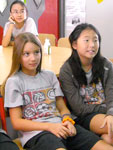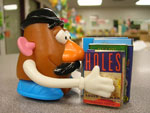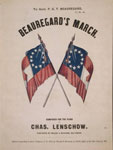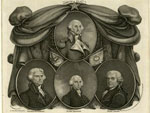Using Skype in the Classroom

In this video (20 min. 49 sec.), educator Silvia Tolisano narrates a comprehensive overview of Skype and its use and potential in the classroom.

In this video (20 min. 49 sec.), educator Silvia Tolisano narrates a comprehensive overview of Skype and its use and potential in the classroom.

In this official Google-created video, educators and other school personnel volunteer ways they've used Google Docs in their classrooms. The video provides some footage of student use, but, more, it presents a good general overview of what Google Docs is and does—including how it can prevent repetition of work and promote collaboration between students, even outside of the classroom.

The Clearinghouse looks at another digital storytelling tool: Digital Storyteller from PrimaryAccess.org.
In this video, Lynne Zalesak, an 8th-grade Houston social studies teacher, reflects on her use of digital tools in the classroom, in support of student-created digital storytelling. Zalesak worked with Photo Story 3, a free Windows application with which students can create documentary-style videos with narration.
(Note: To view this video, you will need to be connected to a network that allows YouTube access.)

In this blog post, Greg Kulowiec, a high school history teacher and classroom technology integration specialist, describes how to create your own Choose Your Own Adventure videos on YouTube. Students plan and shoot videos, and then create clickable hot spots on the videos linking to other videos they've made representing the choices.
Kulowiec's students used the concept to create videos comparing the French Revolution and recent Egyptian revolutions. Two examples of these projects can be selected and viewed at the end of the string of tutorial videos.
This format encourages contrast and comparison. Perhaps viewers can choose different actions "at" a historical event—watching versus active participation, for example—and the viewer's decision can link to videos relating the accounts of eyewitnesses and participants who made similar decisions. Another option would be to have students create works of historical fiction, or videos which describe class differences (choose between being born into a wealthy family or a poor family in a particular time and place, choose between being born male or female, etc.). The opportunities are endless.
Finally, the comments provide some insight into green-screen techniques for beginners.
(Note: To view the videos, you will need to be connected to a network that allows YouTube access.)
Learn more about digital storytelling tools, including iMovie and Movie Maker, Little Bird Tales, Animoto, and more in Tech for Teachers.
Unable to access YouTube at school? Tools like KeepVid can help. Remember to consider copyright!

So how do we top the popularity of our historical thinking poster? We make a good thing even better! Check out Teachinghistory.org’s interactive version of the historical thinking poster for the 20122013 school year!
Just like the original poster, we created a version specifically for elementary classrooms and another for secondary grade use.
With links to lessons, primary sources, teaching ideas and more, the interactive poster helps guide you to great resources found on Teachinghistory.org, such as:
Here are a few ideas to get you started:
Be sure to check out Teachinghistory.org’s interactive Civil War poster filled with teaching resources related to the primary sources depicted!

Textbooks are often a major resource for students in their history class; however, students may not really be acquainted with their book or its content, layout, and supplementary resources. Use “getting to know your textbook” to introduce students to the genre of grade 512 history textbooks and prepare them to more effectively use the information and tools these books provide.
This activity often takes less than an hour, but it comes with a big payoff, as students become familiar with their textbook and its resources. Additionally, extending this activity can help students recognize the textbook as one historical account among many, and use active reading strategies to more easily understand its prose.
“Getting to know the textbook” is a short lesson where students survey and explore their traditional print textbooks. Ideally this lesson occurs soon after students are first issued their books. Using one of several activities, students investigate textbook organization and layout, constituent features and extra resources, and get to know what is in their book so they can use it more effectively throughout the course.
Students learn that the textbook includes specific historical reference tools, such as timelines, various types of maps (e.g., physical, themed, political), and important primary sources like the text of the Declaration of Independence and the Constitution. (Frequently these two founding documents are annotated in helpful ways in a textbook’s appendix.) Charts, maps, and primary source images are often identified with page numbers in the prefatory material. Also included here may be a list of special features, such as an explanation of how historians examine artifacts and documents, or how to use the textbook when studying. After completion of this activity, students are poised to efficiently use their textbook as a reference tool and use its features to help them work through struggles with particular historical content or to complete particular assignments.
Survey your textbook ahead of time and identify key sections, features, and resources that students should notice and pay attention to. Using the Bank of Sample Questions handout, create a set of questions for your students. Remember to tailor this set for your specific students and book through selecting, modifying, and even adding to, the set in the bank. Make a handout that consists of these questions.
This activity should require students answer the questions in your set. One possible activity is to use the set of questions as the basis of a textbook scavenger hunt. Specify a time for the hunt and reward students who complete a certain number of questions or, alternatively, have students work in groups and award points to groups where each participant has fully completed the worksheet.
Another possible activity is to have each student answer basic questions about source and layout and then, working in pairs or small groups, identify specific pages and features of the textbook that would help them understand a specific historical event or broad span of years that you assign to them. Similarly, students could be assigned specific historical questions and then share with the class the features of the textbook that helped them gather information pertinent to that question.
Finally, make the point that students should learn to survey and “get to know” each textbook they use. Sharing a story about how you were looking for some information and didn’t know it was right there in the book can help them see that this strategy can save them time and headaches.
Active Reading
Any of these activities could be followed by one designed to help students develop active reading skills for the textbook. See Questions #7 and #8, under “Survey chapter layout,” or Question #6 under “Survey page layout” on the Bank handout for sample questions that help students learn to survey particular prose for main idea and story.
Textbook as Genre
Ask students to consider the purpose of the textbook and encourage them to see its potential as a reference book rather than the one true story about the past (as many students believe the textbook to be). Name it as a historical source, one among many, and identify some of its genre’s specific characteristics (for example, coverage of many standards-aligned topics, multiple authors, intended for use in classrooms, published by for-profit companies.) Teach an Opening Up the Textbook lesson to help challenge students’ ideas that this single book is an all-knowing master account.
Most students complete assigned work without realizing that textbooks often provide helpful methods for understanding and making sense of the past beyond the main narrative. Many students complain that textbooks are difficult or boring to read. By surveying the textbook, students begin to learn how to locate and use all of its resources—a skill that can transfer to all their courses.
Textbooks can be difficult to read. This activity can be one of the first to show students that learning to effectively and actively read and use text will be an integral part of your history class.
See “Getting to Know Your Texts” and “Using Your Textbook” under Active Reading Strategies from Dartmouth University’s Academic Skills Center.
A sample worksheet, Survey Your Textbook, can be found on the Pfeiffer University website.
Check out Pearson’s guide to Surveying Your Textbook.
Browse the other entries at Teaching with Textbooks to find additional ways to extend this lesson.
See research briefs related to textbooks and how they present information and some of the difficulties they present for students here, here, and here.

One of the issues with which I struggled as a new teacher was the recognition of major themes prevalent in American history. In my first year of teaching I was often more concerned with getting through the next unit, next lesson, even the next class rather than thinking about the bigger picture. And my ignorance of the important themes of history did a disservice to my students. The event-focused history as I taught it failed to reveal connections and humanize the actors of history; it felt irrelevant to most of my students. The content, in fact, was presented as simply a series of inevitable events; each one distinct from the last, never to be considered again as we marched through time. As I became more comfortable in my teaching, I realized the importance of weaving salient themes of history, including race, class, and nationalism, throughout my lessons as a way to make the content more meaningful. Thus, I began the conscious effort of highlighting the manifestations of these themes in history for the benefit of my students. I discovered that the connections we made through class activities based on these themes allowed my students to see relationships within the content and gain a deeper understanding of the material.
The theme of class in America was one with which I felt a particularly deep connection, and as such, it became a thread that bound many of my American history lessons and units. Class issues and class conflict imbue nearly every event in American history. Of course, class was a significant concern as the Founding Fathers developed the framework that became our nation. And class issues are important to those studying the workers of the Industrial Revolution and the soldiers of the Civil War. And from there, class has become arguably even more important to our history. During the Gilded Age and the Progressive period, labor issues were rooted firmly in class. This theme continued through the 1930s, during which time most conflict in American society concerned clear class questions. And since the 1970s inflationary pressures and the struggles of the middle class have often been topics of historians, economists, and pundits. Today, we often hear about issues related to the economic crisis, class disparities, and the effects on the middle and lower class. To adapt an expression from professor and philosopher Cornell West—in all circumstances of history, class matters.
As I have suggested in previous posts, using music to engage, inform, and otherwise foster meaningful learning has worked well for my students and me. Within the theme of class in particular, a rich bounty of songs exists and can provide that fundamental thread through which the theme of class can connect with many periods in history. Songs about class give voice to those we rarely listen to or read about in our textbooks, but can be a component of instruction important to historical understanding.
In early American history students and I listened to Yankee Doodle Dandy and assessed the class differences emerging between the colonists and the British. We reviewed class conflict and the emergence of technology during the Industrial Revolution through contemporary sources including Radiohead’s haunting Palo Alto in an effort to tease out some of the feelings of those fearful of what kind of life new technology would bring and the associated loss of jobs for craftspeople in the 19th century. Antebellum period songwriters including Stephen Collins Foster and Daniel Decatur Emmett provided glimpses into the lives of working-class people of the U.S. as we approached the Civil War.
But for me it was music from the labor movement of the late 19th and early 20th centuries, which allowed me to deeply explore the theme of class in American history. Images depicting working conditions and songs written about the plight of the working class as they voiced their frustration and anger toward employers spoke to my students beyond the textbook. Folk musicians from Woody Guthrie, Phil Ochs, and Pete Seeger to Bob Dylan, Bruce Springsteen, and the band Bright Eyes have expressed some of these sentiments and I employed them generously. Bluegrass and country artists including Bill Monroe, Hank Williams, and Earl Scruggs also shared stories of the working class and the rural poor in their songs. And beyond the labor movement specifically, music from urban streets has voiced how not only race but class issues have contributed to the struggle toward equality. Artists including Gil Scott-Heron Public Enemy, Mos Def, Talib Kweli, and Common have all confronted class issues. Moreover, the genre of punk rock largely emerged from working-class ethos and often provides the voice for class struggles as viewed by youth culture. Teachers can use the medium of music from various genres as a means to address class and class issues in a culturally significant way.
Teaching history as more than a series of inevitable events is elemental to quality instruction. Providing opportunities for students to understand the enduring themes that are often left out of traditional, event-focused history can be a way to challenge those myopic narratives. And music focused on the theme of class seems especially prevalent and potent as a way with which to transcend history lessons that are disconnected and irrelevant to students. It is music that is accessible, relevant, and has the ability to engage and inform your students in ways they are not likely to forget.
Read up on 7-12 teacher Diana Laufenberg's take on teaching thematically, also in the blog.
Looking for more resources on the history of class and labor? In the Beyond the Textbook "Coal and the Industrial Revolution," historian Thomas G. Andrews examines the history of the coal industry. Teachinghistory.org has also reviewed more than 140 websites that include labor and class history resources.
![Political Cartoon, Untitled [Progressive Fallacies], March 18, 1912, NARA Political Cartoon, Untitled [Progressive Fallacies], March 18, 1912, NARA](/sites/default/files/progressive.jpg)
I am a student teacher and I will be teaching the Progressive Era. I was wondering if there might be any ideas out there for a group class activity on this unit?
Looking through the NHEC website is always a good place to start when you’re searching for teaching materials. Our Lesson Plan Reviews section, for instance (listed under Teaching Resources), includes dozens of entries, including one on the Progressive Era by Bringing History Home. These lesson plans have already been vetted by our staff according to an evaluation rubric that is posted at the bottom of each review. Use our Lesson Plan Gateway to do a keyword search for lesson plans on the web. But do be a savvy consumer; while we have vetted the websites, we have not reviewed the individual plans.
Another useful approach when searching for lesson plans is to look in digital archives. The Library of Congress, for instance, has lesson plans for various grade levels, organized by historical theme. Among the several lessons on the Progressive Era are lessons on child labor and women’s suffrage. Each lesson includes classroom activities, as well as primary sources from the Library’s American Memory collection. The National Archives, similarly, has a whole host of lesson plans, including one on the Progressive Era that uses political cartoons to understand the period. The lesson includes historical background, teaching activities, and resources from the National Archives.
There are also a number of excellent websites, designed with teachers in mind, that pair lesson plans with digitized primary sources. The Gilder Lehrman Institute of American History, for instance, is always a good place to look for teaching ideas. They have four lessons on the Progressive Era—one for high school teachers, two for middle school teachers, and one for elementary school teachers—that include background information, suggested activities, and links to relevant materials. Digital History, a project hosted by the University of Houston, is another good resource for lesson plans. Their lesson plan on the Progressive Era includes historical background, links to primary documents, timelines, and teaching activities.
Finally, you might also look to other, more specialized sources for lesson plans. When focusing on the Progressive Era, for instance, you might look for a lesson on working conditions. A quick search turns up a PBS Frontline lesson that centers on Upton Sinclair’s seminal work The Jungle, and includes links to chapters of the book. You might also search for lessons about the political activism of women when considering what to teach about the Progressive Era. Women and Social Movements in the United States, hosted by the Center for the Historical Study of Women and Gender, is a great resource for teaching materials. They have a number of specific lesson plans, many of which examine Progressive Era reforms, like one on New York suffragists and electoral politics from 1919-1926.
Most of these lesson plans include some degree of group work. When they don’t, you can always make the adjustment yourself. When a plan calls for students to read primary sources, for instance, you might have them work in teams to conduct a group analysis.
Finally, as you go through these various websites looking for a lesson plan that you like, you might want to bookmark them in your web browser. All of them are worth returning to at some point.

Was John Adams considered to have been a great president? How have historians assessed greatness in presidents?
A number of presidential historians have come to a consensus regarding the qualities that so-called great presidents have exhibited. For example, Arthur Schlesinger, Jr. distinguishes great presidents as those who "possess, or are possessed by, a vision of an ideal America." Another historian, Robert Dallek, similarly states "every effective president had a vision or even a series of visions about where he wished to lead the country." In addition to possessing a vision for the nation, great presidents have succeeded in establishing what Schlesinger describes as "a deep psychic connection with the needs, anxieties, dreams of people." They have achieved this bond using education and persuasion to convince Americans to consent to their own vision of the nation's future. Dallek correspondingly writes that effective presidents have needed to found their policies "on a shared national perception of what served the country's well-being." James MacGregor Burns likewise links leadership to the creation of a "collective purpose" measured "by the satisfaction of human needs and expectations."
In addition to vision, Schlesinger observes that while moments of crisis have presented presidents with "opportunities for bold and imaginative action," even without such crises, "forceful and persuasive presidents—Jefferson, Jackson, Theodore Roosevelt, Ronald Reagan—are able to impose their own priorities on the country." Dallek adds pragmatism and credibility as essential qualities of the most effective presidents.
Using the above mentioned criteria, John Adams has not traditionally been viewed as one of the great presidents of the United States. Much of the lingering criticism of Adams can be traced to his re-election campaign of 1800, which he lost to Thomas Jefferson, becoming the nation's first one-term president. During the campaign, he was criticized by both the Republicans, who supported Jefferson, and his own party, the Federalists. Popular historian David McCullough has described the campaign, which resulted in Thomas Jefferson's ascendancy to the presidency, as "a contest of personal vilification surpassing any presidential election in American history." During the 1800 campaign, Adams was called a monarchist, a warmonger, and an indecisive leader during wartime. He was tarred as a vain eccentric with an "ungovernable temper." He was attacked for his conservative outlook and for his tendency to act irresponsibly and capriciously without consulting his cabinet and advisors. His enemies spread rumors that he was insane, and like Jefferson, he was branded as a libertine.
Adams was also blamed both for actions he took during his term in office and for a supposed turn in political philosophy to favor aristocracy and monarchy over republicanism and democracy due to his opposition to the French Revolution. During the subsequent "quasi-war" with France, Adams's signing into law the Alien and Sedition Acts, which he did not initiate, became a liability that tarnished his reputation. His call for new taxes and the creation of a standing army alienated many at the time. With Jefferson's victory characterized as the "Revolution of 1800," Adams's association with the extinguished Federalist party has been proof for many that he was on the wrong side of history.
However, recent biographies have sought to reconsider Adams and his legacy. One biographer, John Patrick Diggins, believes that the assessment of Adams "as something of a loser" stems from a misunderstanding of the legacies of both Adams and Jefferson. Another, C. Bradley Thompson, contends that Adams was consistent in his political thought and did not adopt anti-republican views as his enemies had charged. In addition, John Ferling emphasizes Adams's decision to send a peace mission to France despite opposition within his administration and party—an action that many believe cost him the 1800 election—as not only "a courageous deed, an act of statesmanship that saved countless lives," but as an act that "spared the new nation unimaginable dangers—dangers to the survival of its republican experiment as well as to the very existence of the Union." These authors and others assert that Adams's success at preserving the nation's liberty despite his failings as a political leader point to his enduring legacy. However, some of the lingering criticism stems from Adams himself, writing, "I am not, never was, & never shall be a great man."
Burns, James MacGregor. Leadership. New York: Harper & Row, 1978.
Dallek, Robert. "Splendid Misery." Review of The American Presidency: An Intellectual History, by Forrest McDonald. Reviews in American History 22 (December 1994): 561-66.
Diggins, John Patrick. John Adams. New York: Times Books, 2003.
Ferling, John. John Adams: A Life. Knoxville: University of Tennessee Press, 1992.
Knott, Stephen. "Review Essay: The Legacy of John Adams." Review of John Adams, by David McCullough, and John Adams and the Founding of the Republic, edited by Richard Alan Ryerson. Presidential Studies Quarterly 32 (June 2002): 428-31.
McCullough, David. John Adams. New York: Simon & Schuster, 2001.
Schlesinger, Arthur M., Jr. "Editor’s Note." In Diggins, John Patrick. John Adams. New York: Times Books, 2003, xvii-xx.
Thompson, C. Bradley. John Adams and the Spirit of Liberty. Lawrence, KS: University Press of Kansas, 1998.